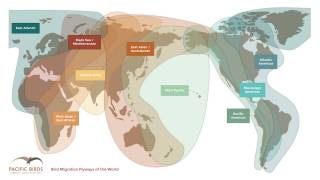Why is the Influenza B Virus So Fatal?

Influenza B viruses circulate every year around the world, but they are generally seen more often at the end of each flu season.
But the 2019-2020 flu season in the Northern Hemisphere appears to be different.
The Centers for Disease Control and Prevention (CDC) recently issued a Health Advisory reminding clinicians that influenza B viruses can cause severe illness in people of all ages, including children.
This CDC Alert issued on January 10, 2020, said the Influenza B viruses accounted for half of the detections in Canada and influenza B/Victoria viruses were the predominant influenza type detected in the USA.
Furthermore, Influenza B is related to the increasing number of influenza-related pediatric fatalities confirmed during the 2019-2020 flu season.
As of January 4, 2020, the reported 21 of the 32 influenza-associated pediatric fatalities were associated with influenza B viruses.
And, so far this season, influenza B virus infections account for about half of all hospitalizations reported through CDC’s laboratory-confirmed influenza hospitalization surveillance network.
Unfortunately, the CDC’s influenza forecasts suggest that national influenza activity will remain elevated for several more weeks.
There are 4 types of influenza viruses: A, B, C, and D. Human influenza A and B viruses cause seasonal flu epidemics almost every winter in the United States.
Influenza B viruses are not divided into subtypes but instead are further classified into two lineages: B/Yamagata and B/Victoria.
Similar to influenza A viruses, influenza B viruses can then be further classified into specific clades and sub-clades.
Influenza B viruses generally change more slowly in terms of their genetic and antigenic properties than influenza A viruses, especially influenza A(H3N2) viruses.
Influenza surveillance data from recent years shows the co-circulation of influenza B viruses from both lineages in the USA and around the world.
However, the proportion of influenza B viruses from each lineage that circulates can vary by geographic location.
In past seasons, the proportion of influenza-related pediatric deaths associated with influenza B viruses has generally been higher than the proportion of influenza B among circulating viruses.
To reduce all influenza health issues, the CDC continues to recommend everyone 6 months of age and older get a flu shot.
All available vaccine formulations this season contain A(H3N2), A(H1N1)pdm09, and B/Victoria virus strains. The 2019-2020 U.S. quadrivalent influenza vaccines contain these and an additional influenza B/Yamagata virus.
The CDC does not recommend any specific influenza vaccine formulation over another.
The CDC also recommends antiviral medications for the treatment of influenza, because antiviral treatment has shown clinical and public health benefit in reducing illness and lessening severe outcomes of influenza.
Influenza antiviral medications are most effective in treating influenza and reducing complications when treatment is started within 48 hours of illness onset.
But if you do start taking flu antivirals on the 3rd day, a few clinical studies suggest there is clinical benefit from antivirals among hospitalized patients and young children with febrile illness even when treatment was started 3 to 5 days after illness onset.
There are 4 influenza antiviral medications approved by the U.S. Food and Drug Administration (FDA) for use in the USA during the 2019-2020 influenza season.
Three of these drugs are chemically related antiviral medications known as neuraminidase inhibitors: oral oseltamivir phosphate (available as a generic version or under the trade name Tamiflu®), inhaled zanamivir (trade name Relenza®), and intravenous peramivir (trade name Rapivab®).
These medications block the viral neuraminidase enzyme and have activity against both influenza A and B viruses.
The 4th medication is oral baloxavir marboxil (trade name Xofluza®), which is active against both influenza A and B viruses but has a different mechanism of action.
Baloxavir is a cap-dependent endonuclease inhibitor that interferes with viral RNA transcription and blocks virus replication.
In October 2019, FDA approved an indication for baloxavir treatment of acute uncomplicated influenza within two days of illness onset in people 12 years and older at high risk of developing influenza-related complications, based upon the findings of a clinical trial.
Flu shots and antiviral medications are available at most pharmacies in the USA.
Last week’s Northern Hemisphere flu report can be found here.
Influenza antiviral and vaccine news is published by Precision Vaccinations.
Our Trust Standards: Medical Advisory Committee


























